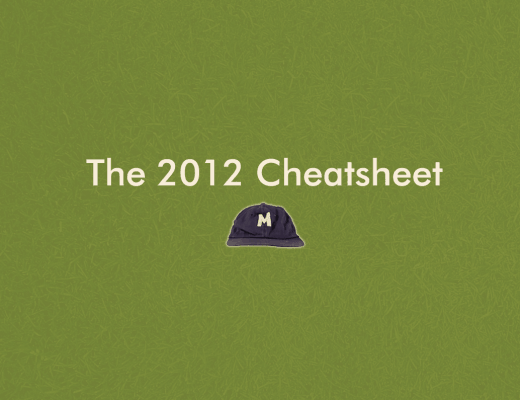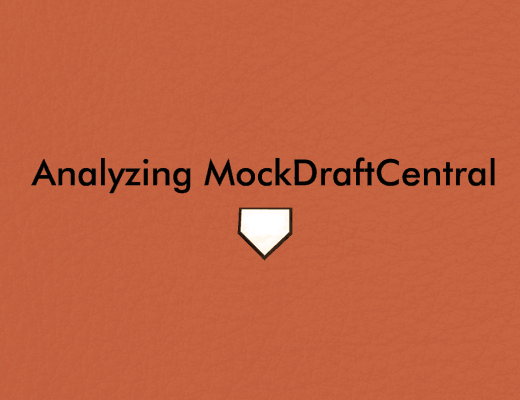Throughout the brief three year history of this fantasy baseball site, I’ve used my wacky non-scientific method to point out various hitters as potential sleeper candidates. Meanwhile, the pitchers have been left neglected and, frankly, the time has come to right that wrong.
In starting this search, it became apparent that the level of “sleeper” we try to find for pitchers is much different than it is for batters. Given that each fantasy team starts four to six SP’s, you’re only really going to start and rely on the best of the best. This is why you don’t reminisce about the time you picked up Ian Snell off the waiver wire even if he did do better than expected. With ten or more starting hitters, you’re often relying on lower level talent to save your season so sleepers are easier to come by. Pitchers? Not so much.
There’s seemingly an infinite number of ways to go about about finding an undervalued pitcher. There are a few key statistics for pitchers in fantasy baseball but there are also so many unreliable factors that influence those categories. An unlucky BABIP can make a pitcher’s WHIP swell up while an unlucky HR/FB rate can inflate their ERA. Meanwhile, wins aren’t even at the complete control of the pitcher so we can’t can’t even worry about trying to predict that. As I’ve talked about before, pitchers can control strikeouts and walks but homeruns and hits are a different story.
With that knowledge in hand, I set out on a spiritual statistical journey. I reasoned that pitchers are far too complicated to make an unscientific model like I did when I created my methodology for finding sleeper hitters. I started to look at a ton of variables to see what could accurately predict walks or strikeouts in an upcoming year and found a few that hold up well, even if they may be a bit nontraditional.
- Swinging Strike Percentage comes from the PitchFx stats offered at Fangraphs. It measures how well a pitcher is able to make a batter swing and miss, which it turns out is a good predictor of current and future strikeout rates.
- Contact Percentage also is a PitchFx stat and measures how often hitters make contact with a pitcher’s pitches. This stat also predicts current and future strikeout rates quite well.
- Strikes/Balls Ratio isn’t exactly offered anywhere but you can calculate it on your own by dividing total strikes by total balls that were pitched by a pitcher in a season (which is available at Fangraphs). This correlates well with walk rates for a pitcher.
- Strikeout-Walk Differential is a pitcher’s BB% subtracted from K% (also manually calculated). While the other stats show us how well a pitcher controls a single at-bat, this shows us how the pitcher has actually performed. Some people like using K/BB ratio but I prefer this statistic because a 3.0 K/B ratio could mean 3.0 K/9 with 1.0 BB/9 or 9.0 K/9 with 3.0 BB/9. The differential shows us that gap better.
In glancing over years of data with these statistics, I was able to determine some good baselines for each that allow us to either put a pitcher in the “great” category or the “not-as-great” category. The baselines resulted in about 20-25 pitchers showing up in the “great” category each year. Many of those pitchers are the elite pitchers that you know and love but others are the guys who are drafted later on in drafts but poised for future success. The baselines ended up being:
- SwStr% Above 8.5
- Contact% Under 80%
- S/B Above 1.70
- K-BB Diff Above 12%
I try not to be so stringent on these baselines that I don’t allow a player with a 80.1% contact rate to not be considered so I make sure to try to locate the close calls as well. By punching those numbers into the fun machine, a beautiful list of pitchers is created. Comparing those pitchers to their ADP in that upcoming year allows us to see who is being undervalued despite having a good skill set. I try to look at those that have an ADP of greater than 125 as that is usually a good starting point to show pitchers that are not being drafted as top-of-the-rotation guys.
In 2009, it helped us identify sleepers such as Zack Greinke, Josh Johnson, Jered Weaver, Wandy Rodriguez, Javier Vazquez or Ricky Nolasco. In 2010, Jered Weaver was still being undervalued as well as Max Scherzer, Hiroki Kuroda and Ted Lilly. Last year, it was James Shields, Ian Kennedy and Daniel Hudson. Of course, there were some other names that didn’t propel forward into stardom but they rarely took huge steps backwards.
So, that brings us to today and the year 2012. Perhaps pitchers are getting better because the list is longer this year than in the past with 36 total pitchers and 16 of them being drafted with an ADP greater than 125. The full list of names for this year and past years is found in this Google Doc.
Among the higher drafted players, there are some quasi-sleepers like Madison Bumgarner and Michael Pineda that you may want to keep an eye on. However, here’s the list of 2012’s 16 possible deeper sleepers that we’re interested in examining:
Brandon Beachy (133.7)
Matt Garza (135.7)
Shaun Marcum (144.2)
Anibal Sanchez (150.2)
Max Scherzer (153.7)
Brandon Morrow (167.5)
Cory Luebke (172.4)
Jaime Garcia (187)
Hiroki Kuroda (208.9)
Ryan Dempster (249.2)
Scott Baker (257.7)
Bud Norris (267.5)
Homer Bailey (337.1)
Felipe Paulino (390.3)
Chris Capuano (394)
Philip Humber (Undrafted)
Some players like Hiroki Kuroda may not seem overly exciting but this group will certainly have some players that end up taking the next step towards fantasy greatness over 2012. To help pin down the best of the best here, I’ll be doing individual posts about their worthiness of being considered a sleeper over the upcoming weeks. In the meantime, noodle over this list. Any big surprises here? I know Chris Capuano surprised me and I wonder if this Cory Luebke is actually for real now. More to come, my friends.



